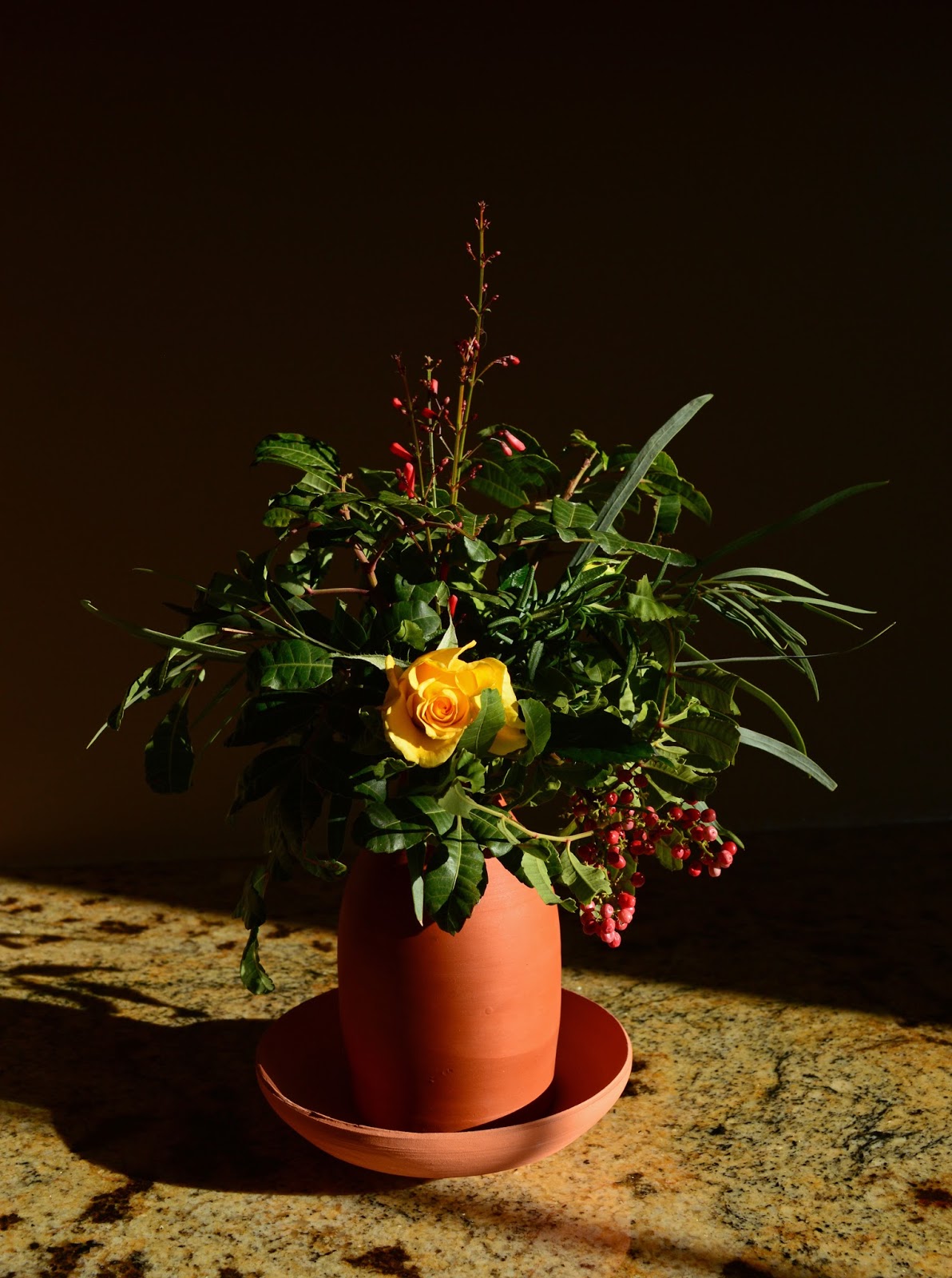| Sedeveria "Sorrento" |
I have been looking forward to doing this because of one little plant in particular. Calandrinia grandiflora was bought last spring - probably just because I was colour and plant hungry! I was starting a little collection of potted herbs on the front patio and the Calandrinia joined them though I didn't repot it at the time. It's brilliant flowers certainly satisfied my colour lust!
Then I left it in the pot and didn't really consider putting it in the garden until December. It's often treated as an annual; but technically it is perennial so at last, despite the bad condition of the plant, I couldn't resist plunking it in the ground. There wasn't much left by that time! It had one sparse rosette of leaves and one stem with a few more stunted leaves.
But it has perked up and begun to spread along the ground. (Oops, I thought it had a more upright habit!) It remains to be seen whether it can weather a desert winter. If so, it should send out more of its brilliant flowers next spring. It is a long blooming plant in favourable conditions: spring through autumn. My worst problem with it, even in the pot, was judging the right frequency of watering. This Chilean native is variously said to need "regular" water, to be drought-tolerant, and to sometimes rot in coastal California's wetter winters. At any rate, my little specimen seems a lot sturdier in the ground so maybe it can now better survive the vagaries of desert winter and my play-it-by-eye watering.Two other succulents have also gone into the garden. Warnings of frost-scarring accompany these plants so I am watching them fairly closely now that we have had some freezing nights. So far I see no damage, and their rich colours extend the range of foliage hues in the garden. Their forms are hard to duplicate with any other type of plant as well.
One is Senecio "Blue Fingers" (Senecio talinoides var. mandraliscae). Its steely blue-grey-green fingers - some slender, some thicker - have an almost underwater effect.
And then there is Sedeveria "Sorrento", presumably a cross between a Sedum and an Echeveria, though I don't know the details. It is a very handsome mahogany colour and forms strong star-shaped rosettes with its pointed leaves.
As of the end of December, with nighttime temperatures falling to 30 degrees F (-1 C), even these fairly sensitive plants are undamaged. I may need to cover them eventually but am hoping that attention to micro-climate will carry them through for the most part. I hope they will prove sufficiently well-adapted because their forms and colours are irreplaceable, and appear so much at home in a desert garden.
So there is my End of the Month View, following Helen's meme at The Patient Gardener. On her blog and other participating blogs, many more thorough End of the Year Views can be visited for inspiration. Here it is just three little plants which I am enjoying as we head into 2015!
Happy New Year!






























